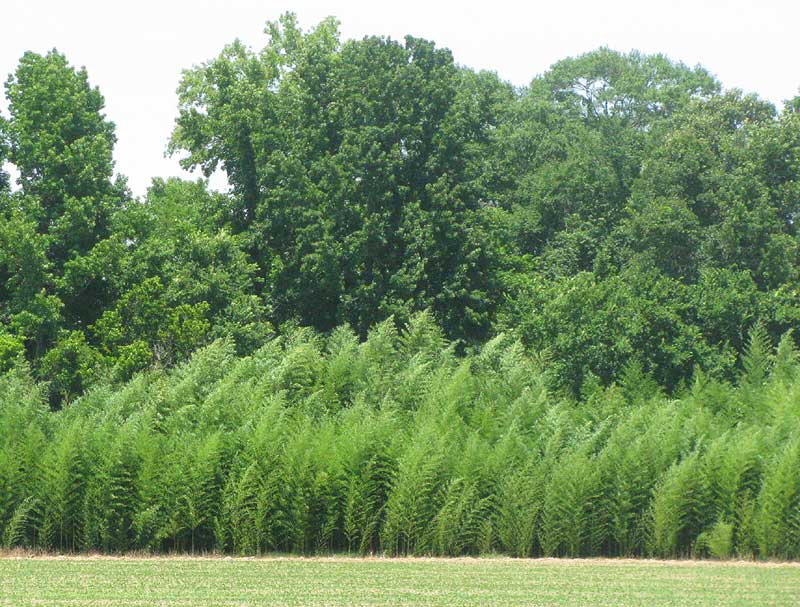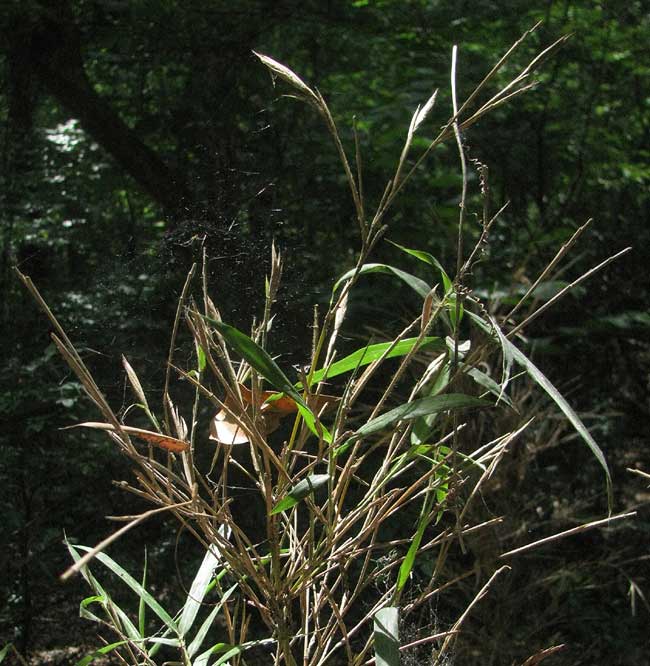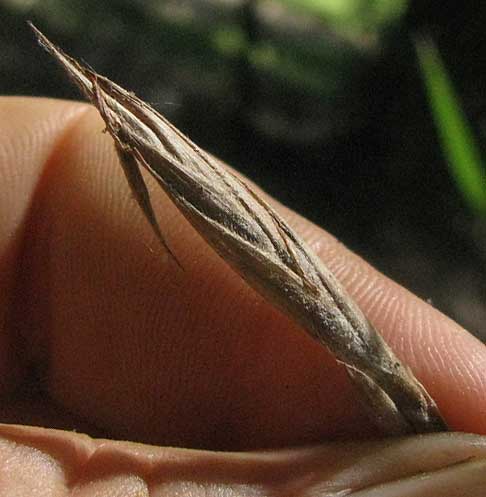Excerpts from Jim Conrad's
Naturalist Newsletter

from the June 10, 2012 Newsletter issued from the woods of the Loess Hill Region a few miles east of Natchez, Mississippi, USA
GIANT CANE
When I "go to the swamp" I bike past a bottomland woods at the edge of which rises a vigorous, beautiful stand of Giant Cane, ARUNDINARIA GIGANTEA, a native kind of bamboo. Bamboos are woody-stemmed grasses. You can see 20-ft-high (7m) plumes of Giant Cane gracefully swaying in wind blowing across a freshly planted soybean field above.
What a wonderful thing Giant Cane is, and what a shame we no longer remember how important it was to early people here, particularly indigenous people, who used it in their buildings, in making weapons, fishing equipment, jewelry, baskets, musical instruments, furniture, pipes, and medicines -- even its young shoots were boiled and eaten like asparagus.
Something interesting about Giant Cane is that it flowers only rarely -- by some accounts every 40 years or so. Mostly the species reproduces by sprouting. It's possible, maybe probable, that all the cane stems in the above picture are just shoots of one plant, the main "stem" being a much-branching, underground rhizome. Such genetically identical populations are called "genets." Each leafy bamboo stem lives for years until it flowers, and then it dies.
Therefore, it's unusual to find flowers. I've seen flowers a few times around here and my impression is that each population, or clone, flowers on different years than neighboring clones, so all of Mississippi's Giant Canes wouldn't flower at the same time.
In our area it's unusual to see such big cane displays as is shown in the picture, though before the Europeans arrived there were vast "canebreaks" covering hundreds of thousands of acres/hectares. More typically you see a few stems at a woods edge, or maybe some shade-stunted stems in a forest's understory, usually not over 10 feet tall (3m) and not growing very closely together. This week on a stem about head high I spotted some old, ready-to-fall flower spikelets atop a much-branching tuft of stems and leaves at the stem's top -- the tufts are called "top knots" -- shown below:

One of those spikelets, about 1½-inches long (4cm), apparently having weathered through an entire fall and winter, is shown below:

Giant Cane spikelets are typical of the grasses, basically like those of fescue or bluegrass, with a bottom pair of glumes subtending two overlapping ranks of six or more florets.
In the US we have three cane species, all in the Southeast, but only Giant Cane occurs in Mississippi. There's another species in the southern Appalachians, and a third along the eastern Coastal Plain.